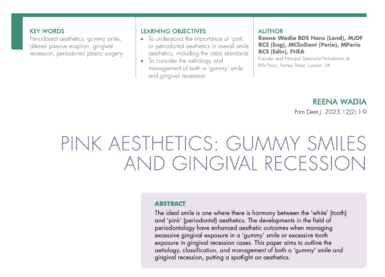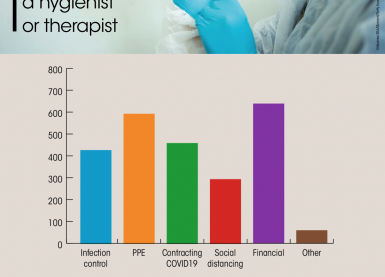Home/Articles
/ General Dental /
Reena’s Notes: Appropriate aesthetic orthodontics for the GDP with Dr Tif Qureshi
January 19, 2015

Introduction:
- Minimally invasive dentistry can result in highly aesthetic results in cases that would have previously been treated quite aggressively.
- Results are far more predicable with the aid of digital technology. For example, it is possible to plan orthodontic cases digitally prior to alignment.
- It is important to take the patient through a progressive route. Treat complex cases in steps and check patient expectations as well as outcomes at each stage.
- It is imperative to know the limitations of the systems we use and ourselves. If you are a beginner, you are advised to start off with simple removable anterior orthodontics.
An important fact:
- Always remember: “Arch length reduces following orthodontic treatment, but also does so in untreated normal occlusions”- Little RM (1990).
Treatment pathways:
- Do nothing – but you still need to inform your patient that the teeth may alter in alignment over time.
- Restore – direct or indirectly in the current position.
- Simple alignment/comprehensive orthodontics with/without composite bonding.
Planning:
- Select your cases carefully.
- Make the most of composite mock-ups.
- Guidance checklist – basic orthodontic assessment, mentored case assessment, alternatives must be offered, compromises must be visibly explained, differential tooth wear, tooth shape and black triangles, interproximal reduction, arch evaluation and long term retention.
- Black triangle and tooth shape analysis is important as on aligning teeth you may create black triangles, which needs to be discussed beforehand.
- Arch evaluation and anterior occlusal control must be taken into account.
- Arch planning – consider if you need to treat just one arch or both.
- Work out how much crowding is present by comparing the width of teeth with the length of arch curve.
- For successful anterior orthodontic planning – set a curve through arch evaluation and this will also dictate the occlusal pattern. Show this to your lab so they understand the requirements and make the most of software, such as Spacewize. A 3D model of the proposed position of the teeth can also be printed – this will most certainly aid informed consent.
- The arch evaluation idea to 3D visuals and thereafter 3D printing process was originally specific to Inman Aligner and is now the core ethos of the IAS Academy that teaches a range of techniques from Simple to Comprehensive treatment.
- Space creation – understand how to use strips and discs, the amount and location needs to be determined precisely with the help of guides. It also helps if you understand why you’re doing it. IPR – interproximal reduction – creation of space between teeth. PPR – predictive proximal reduction.
- Always plan the retention stage at the start and ensure your patient understands its importance.
Personal development:
- It is important to continually analyse your work and self-critise to ensure continual development.
- A practical way to do this is to invest in a camera and analyse your photos regularly.



